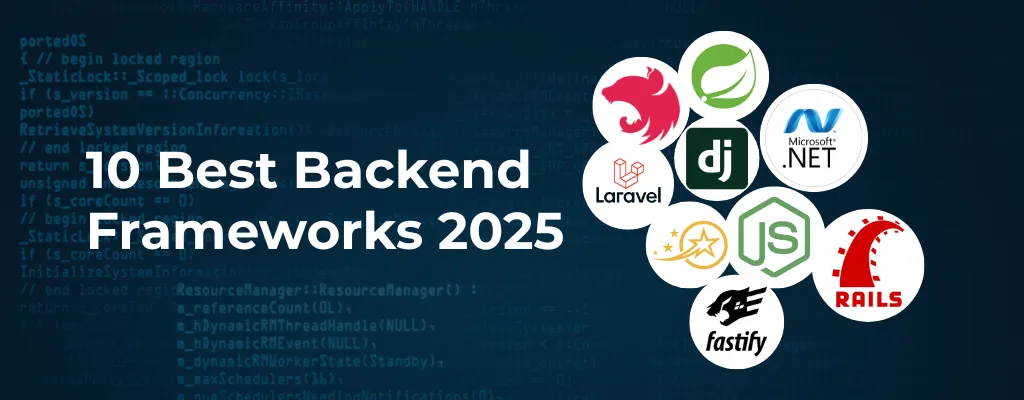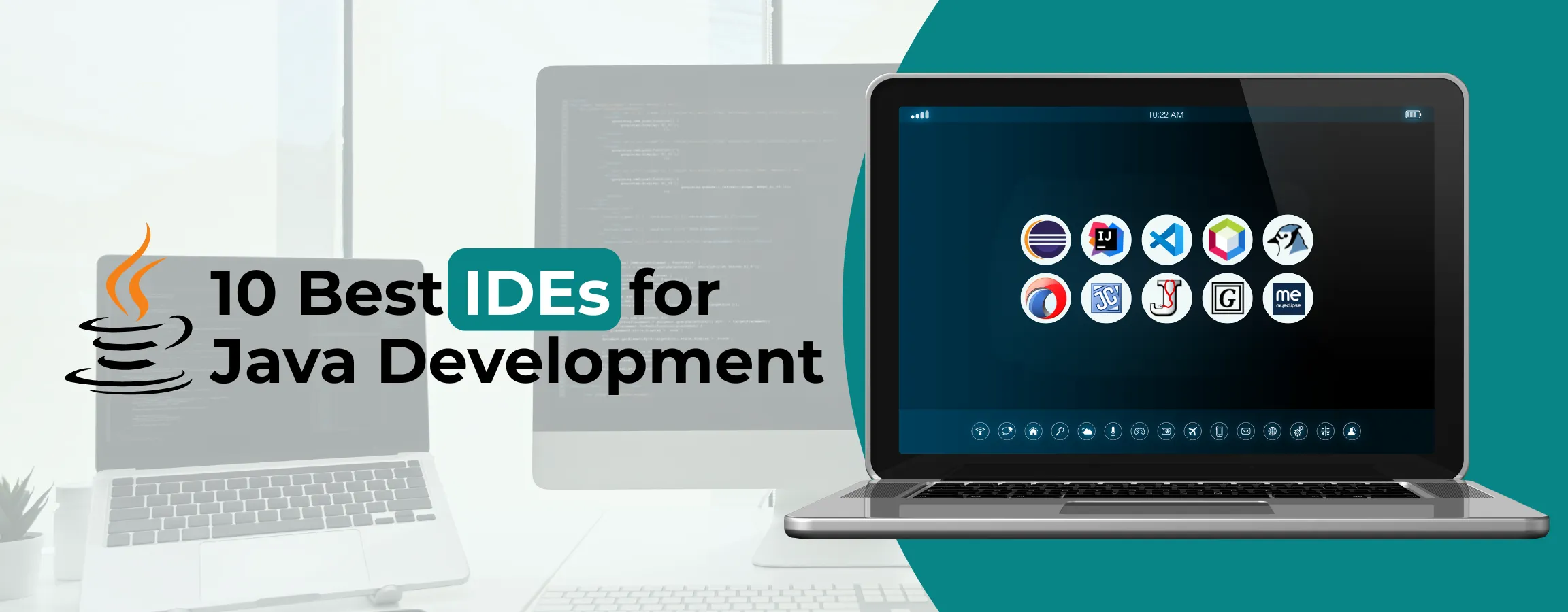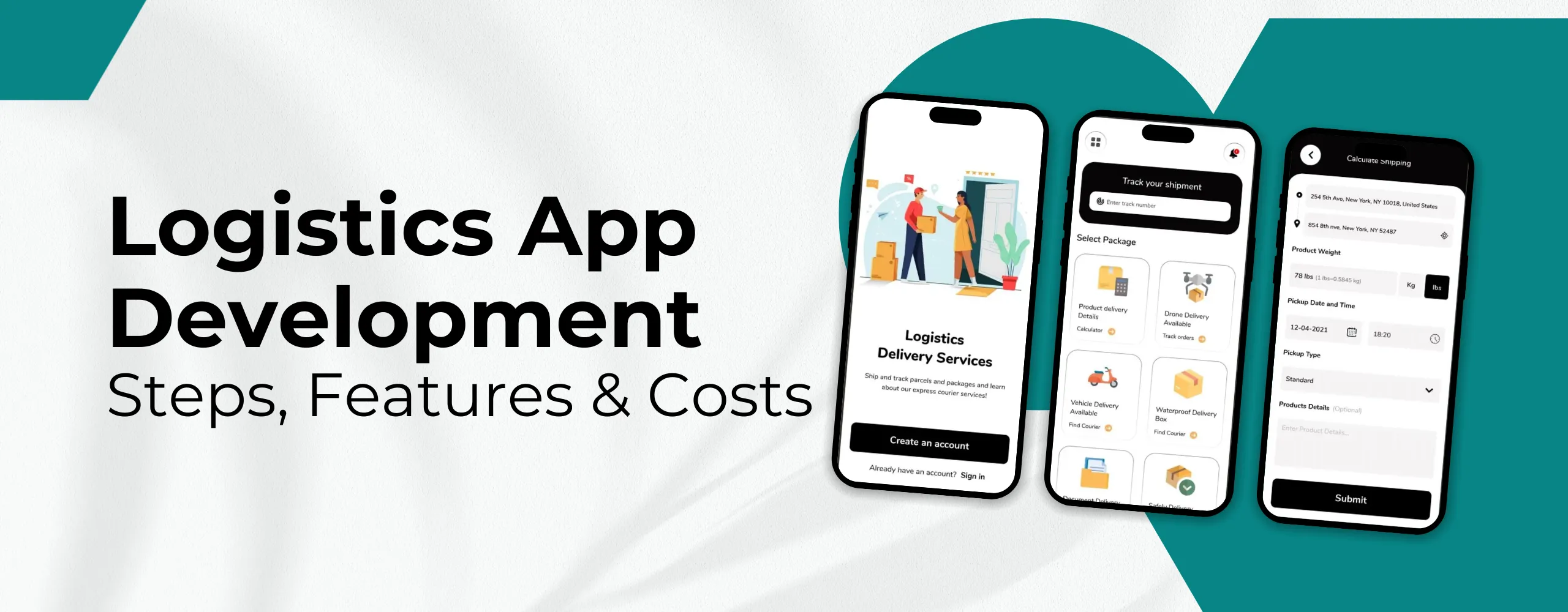
Backend Framework is like an “engine” of a car, it works behind the scenes to run web apps evenly. They handle things like talking to the database, running code on the server side and ensuring that many do not crash your app when using it. Choosing the right backend framework can save the developers tons of time and make the application fast, safe and easier to manage.
Over the years, companies have faced major challenges – from the pandemic to supply chain issues and change isn’t slowing down in 2025. Big research from McKinsey says over $130 trillion will be spent worldwide on building new infrastructure and going green by 2027. That’s massive!
So, how do businesses keep up and stay ahead? Many will speak about digital transformation, sustainability, or patron experience. But at the coronary heart of all of it, one thing is usually wanted: a robust, reliable web software.
That’s where backend development comes in. Think of it as the brain of your app, it connects the front-end (what users see) with the logic and data that power everything. In this article, we’ll explain what backend frameworks are, why they matter, and explore the top 10 backend frameworks in 2025 that can help businesses (and developers) build better apps faster.
1. Node.js (JavaScript)
Why it’s still a favorite:
Node.js is built on JavaScript – the same language used on the frontend – so developers can use a language throughout the stack (both front and back). This makes the development smooth and sharp. At the top, Node.js is very effective, handles large volumes of requests well and is excellent for applications that require real-time interaction.
Best for:
- Real-time chat apps (like WhatsApp, Slack, or Discord) where instant data updates are critical
- Microservices that need to communicate quickly and scale independently
- Lightweight APIs (e.g., for mobile or web apps) that require quick responses
- IoT applications where devices constantly send/receive small packets of data
Strengths:
- Non-blocking I/O → Node.js doesn’t watch for one request to complete before beginning every other. It handles a couple of requests simultaneously, making it super rapid.
- Single-threaded asynchronous model → Runs on a single foremost thread however manages multiple tasks via asynchronous operations, lowering overhead.
- Massive npm environment → Access to the world’s largest open-source package library, meaning you may plug in pre-constructed solutions in preference to reinventing the wheel.
Considerations:
- Relational database demanding situations → Node.js works better with NoSQL (like MongoDB) than with complicated relational databases (like MySQL/Postgres), until extra layers are used.
- CPU-heavy tasks → Because Node.js is single-threaded, it isn’t ideal for duties like video processing, massive-scale information crunching, or machine learning—those can block other operations.
2. Django
Why it’s still a favorite:
Django is well-known for its “batteries-included” method. In that manner, you don’t want to spend weeks wiring up necessities like authentication, database handling, or security — Django already comes with those features built in. This makes development faster and more secure since you’re not reinventing the wheel. It’s additionally quite scalable and modular, so that you can start small and develop into complex agency systems.
Best for:
- Content Management Systems (CMS) → Like WordPress options or custom admin dashboards.
- Social Media Networks → User authentication, profiles, feeds, messaging.
- APIs → Django REST Framework (DRF) is extensively used for constructing strong APIs.
- Data-heavy apps → Analytics equipment, dashboards, or apps requiring large-scale records handling.
Strengths:
- MTV architecture (Model–Template–View) → Similar to MVC, this design pattern organizes your code for clarity and maintainability.
- Admin panel → Django auto-generates a powerful admin dashboard, so you can manage data without coding everything manually.
- DRY/KISS principles → Don’t Repeat Yourself and Keep It Simple, Stupid — Django pushes clean, reusable code.
Considerations:
- Monolithic shape → Django tends to bundle the whole thing together. While this is extremely good for brief development, it’s not always satisfactory for microservices or exceedingly distributed systems.
- Performance change-offs → For apps wanting extremely high-speed processing (like real-time gaming or ultra-low latency buying and selling), Django can be slower as compared to lightweight frameworks like FastAPI or Node.js.
3. Litestar (Python)
Why it’s gaining popularity:
Litestar is an async-first Python framework designed for excessive overall performance without sacrificing developer comfort. It’s expressive, light-weight, and built for modern API development. With its awareness of safety, modularity, and pace, Litestar is turning into a go-to choice for Python developers who want scalability and performance.
Best for:
- High-performance APIs that handle heavy traffic smoothly
- Real-time systems needing quick request/response cycles
- Microservices with async communication
- Applications where type safety and clean code matter
- Teams that want a future-ready Python alternative to Django/FastAPI
Strengths:
- Async-first architecture → Built around Python’s async/await, enabling faster concurrent request handling.
- Type-safe with Pydantic support → Ensures data validation and better developer productivity.
- Expressive and modular → Developers can build clean, maintainable codebases.
- Performance-focused → Optimized for low-latency and high-throughput apps.
- Growing ecosystem → Active community and contemporary tooling support.
Considerations:
- Younger ecosystem → Not as mature as Django or Flask, meaning fewer tutorials, plugins, and libraries.
- Learning curve for async → Developers unfamiliar with async/await patterns may need time to adapt.
- Enterprise adoption → Still emerging compared to established giants like Django, Flask, or FastAPI.
4. Laravel (PHP)
Why it’s still a favorite:
Laravel remains the go-to PHP framework in 2025 way to its elegant syntax, powerful surroundings, and developer-friendly layout. It has matured with asynchronous talents, making it faster and more scalable than ever. With built-in functions for caching, queue handling, authentication, and safety, Laravel reduces the need for outside libraries and accelerates development.
Best for:
- Building feature-rich internet programs speedily with minimum boilerplate
- E-commerce structures that require payment gateways, stock, and order control
- Content management structures (CMSs) and blogs in which flexibility and customization count number
- APIs and microservices that combine without problems with frontend frameworks like React, Vue, or Angular
- Applications desiring actual-time updates (with Laravel Echo + WebSockets)
Strengths:
- Elegant syntax & expressive ORM (Eloquent) → Makes database interaction easy and intuitive
- Built-in tools → Authentication, queues, caching, mail, and session management out of the box
- Robust ecosystem → Laravel Forge, Vapor, Nova, and Mix simplify deployment, hosting, and admin panel setup
- Blade templating engine → Enables clean, reusable, and maintainable UI code
- Active community → Huge developer support, extensive documentation, and regular updates
Considerations:
- Performance at large scale → While Laravel is splendid for mid-to-large apps, fairly performance-intensive apps may require optimization or caching techniques
- Learning curve → Beginners may find it overwhelming due to its huge surroundings and advanced functions
- PHP website hosting prices → Some corporation groups prefer Node.js or .NET due to infrastructure options, though Laravel can cope with enterprise-grade apps
5. Spring (Java)
Why it’s still a favorite:
Spring is one of the most popular Java backend frameworks in the 2025 root test, lightweight and business-ready. It simplifies large-scale applications by offering devices such as Spring Boot and Spring MVC, which is perfect for modern, cloud-native and reactive web applications. Developers love the ability to easily handle their flexibility, modularity and complex business requirements.
Best for:
- Enterprise-scale applications requiring high security and reliability
- Microservices architecture that demands scalability and modularity
- Serverless applications for cloud-native deployments
- Standalone Java projects where portability is key
- Apps needing social media integrations or advanced integrations with APIs
Strengths:
- Spring Initializr → A bootstrapping tool to quickly set up JVM-based projects with required dependencies
- Autoconfiguration → Automatically configures dependencies, making development faster and easier
- Spring CLI → Command-line tool to execute Groovy scripts, speeding up Java app development
- Lightweight yet powerful → Offers loose coupling, impressive abstraction, and flexibility
- Cross-cutting features → Built-in solutions for security, logging, caching, and more
- Lifecycle support → Full-stack development from configuration to deployment
Considerations:
- Steep learning curve → Beginners often struggle with its complexity and wide ecosystem
- No strict guidelines → Too much flexibility can lead to inconsistent code across teams
- XML-heavy legacy code → Though modern Spring has reduced XML usage, older projects still suffer from it
- Complex setup for newcomers → Compared to simpler frameworks like Express.js or Django
6. Djapy (Python)
What makes it stand out:
Djapy is Django’s current sibling, designed with async and API-first development in mind. It reduces boilerplate, validates inputs through Pydantic, and auto-generates OpenAPI documents, making development faster and cleaner.
Best for:
- Rapidly constructing REST or GraphQL APIs
- Startups or SaaS merchandise wanting both speed and reliability
- Applications managing real-time updates or high concurrency
- Teams comfortable with Python but wanting something leaner than Django
Strengths:
- Async-ready from day one → Efficient under heavy user traffic
- Built-in validation → Prevents messy data from slipping through
- Instant docs → Swagger/OpenAPI generated automatically
- Familiar Django flavor → Easier adoption for Python/Django developers
Considerations:
- Ecosystem maturity → Many Django plugins aren’t yet compatible with Djapy
- Limited production case studies → Still waiting on big brands to validate it in mission-critical apps
- Migration hurdles → Moving an existing Django project to Djapy isn’t straightforward
- Talent pool → Fewer developers with Djapy experience compared to Django or FastAPI
7. Fastify (Node.js)
Why it’s still a favorite:
Fastify quickly earned a reputation for being one of the fastest frameworks in the Node.js environment. The lightweight center, JSON-Schema-based verification and TypeScript support are best for experts who want movement without leaving flexibility. Backed by way of groups like Capital One and Walmart, Fastify has demonstrated it could handle manufacturing-level workloads efficiently.
Best for:
- High-performance APIs where reaction time is important
- Microservices architectures that require rapidity and scalability
- Applications with strict validation and typing requirements
- Startups or enterprises needing fast MVP-to-scale solutions
Strengths:
- Blazing fast HTTP management → Fastify is optimized for speed, turning in some of the excellent request-per-second benchmarks amongst Node.js frameworks.
- JSON Schema validation → Ensures strict records integrity at the same time as improving serialization/deserialization overall performance.
- TypeScript buckled up → Built with modern development practices in mind, making it extremely good for strongly-typed initiatives.
- Extensible plugin system → Developers can add features without bloating the core, keeping performance high.
- Production-proven → Trusted by large-scale enterprises with millions of requests daily.
Considerations:
- Adaptation required → Developers familiar with Express may need some time to adjust to Fastify’s schema-driven approach..
- Smaller ecosystem → While growing, it still has fewer plugins and community packages compared to Express.
- Not as beginner-friendly → For quick-and-dirty prototyping, Express might feel easier to start with.
8. NestJS (Node.js / TypeScript)
Why it’s still a favorite:
NestJS has speedy turn out to be a top choice for dev professionals who want scalability and shape in their backend tasks. It leverages TypeScript out of the field, making code extra predictable, maintainable, and less error-prone. Inspired with the aid of Angular’s structure, NestJS offers a modular layout and integrated dependency injection system, which means that huge programs can grow without turning into chaos.
Best for:
- Enterprise-grade applications where maintainability and scalability are key
- Microservices architectures that require modular, independent services
- APIs and server-side packages constructed with TypeScript for strict type protection
- Teams with blended frontend/backend experts (Angular/React/Node.Js) for smoother collaboration
Strengths:
- Typescript-First approach → Strong typing reduces runtime errors and increases long-term maintenance.
- Modular architecture → Projects make the code base clean, reusable and easy to manage as it scales.
- The underlying addiction injection → Improves test capacity and decouples components.
- Versatility → Works with Express.js or Fastify under The Hood, provides flexibility in performance ratio.
- Rich ecosystems → Growing communities and plugins for GraphQL, website, gRPC and microservice.
Considerations:
- Concept-heavy → Its Angular-inspired architecture introduces patterns (like modules and decorators) that might feel complex to beginners.
- Boilerplate-heavy → More code upfront compared to minimalist frameworks like Express.js.
- Not ideal for small projects → Overkill if you just need a quick, lightweight API.
9. Ruby on Rails (Ruby)
Why it’s still a favorite:
Ruby on Rails (often just called “Rails”) continues to stand out for developer productivity. Its philosophy of Convention over Configuration and Don’t Repeat Yourself (DRY) saves dev experts from writing unnecessary code. With its integrated scaffolding, developers can spin up new features speedily, which is why startups and establishments alike continue to choose it.
Best for:
- Startups and MVPs → Build and release products speedily with minimum overhead.
- E-commerce platforms (eg Shopify) where scalability and integration mean something.
- Content-heavy apps such as blogs, CMS platforms or marketplaces.
- Affiliated platforms (e.g. GitHub) where reliability and long-lasting stability are important.
Strengths:
- Rapid prototyping → Rails provides built-in generators, making feature development quick.
- Convention over configuration → Sensible defaults mean less decision fatigue and boilerplate.
- Mature ecosystem → Thousands of gems (plugins) for everything from authentication to payments.
- Strong community support → A large, active developer community ensures updates, guides, and help are always available.
Considerations:
- Runtime speed → Rails apps can be slower compared to frameworks like Go or Node.js when handling very high concurrency.
- Memory usage → Rails tends to be heavier on server resources, meaning higher hosting costs for large-scale apps.
- Monolithic tendency → While Rails can support microservices, it’s historically monolithic, which might not suit highly distributed architectures.
10. ASP.NET Core (C#)
ASP.NET Core is no longer “just the Microsoft option”—it’s evolved into a serious competitor for modern, high-performance backend development. Forget the old days of .NET being bulky and Windows-locked; today it’s lightweight, cloud-ready, and plays nicely with Docker and Kubernetes.
Why it’s still a favorite:
Because it’s not trying to be trendy—it’s battle-tested. Teams that need predictability and long-term stability love it. Plus, with C# getting more expressive (almost Python-like in places), younger devs don’t feel stuck with “enterprise Java 2.0.”
Best for:
- Finance and healthcare apps where compliance isn’t optional
- Backend systems that need to integrate tightly with Azure AI/ML services
- Enterprise-scale APIs that can’t afford performance bottlenecks
- Teams that want to stick to one language for backend, desktop, and even game development (Unity runs on C#)
Strengths:
- Blazing fast benchmarks that rival Node and Go (yes, really)
- Strong typing without the TypeScript overhead
- Mature debugging and profiling tools in Visual Studio—saves weeks in enterprise projects
- Cross-platform isn’t an afterthought; Linux support is first-class now
Considerations:
- It still feels enterprise-y—startups often find it too “heavy” compared to Express or Fastify
- Cloud cost can creep up if you don’t optimize (Azure loves to keep you in its ecosystem)
- Smaller talent pool compared to Node.js—finding good C# devs with cloud-native experience isn’t always easy
Backend Frameworks Comparison 2025: Pricing & Future Demand
Not all backend frameworks cost the same to use. Some are free but need expensive servers or hard-to-find developers, while others are cheap and super popular. Here’s a quick table to see which ones are worth learning in 2025.
| Framework | Pricing (Direct + Hidden Costs) | Future Demand (2025+) |
|---|---|---|
| Node.js | Free & open-source, but hosting/server costs can rise for real-time apps. Abundant developers → lowers hiring costs. | Very High |
| NestJS | Free; slightly higher dev cost due to TypeScript learning curve. | High |
| Fastify | Free; minimal hardware costs due to performance efficiency. | Rising Fast |
| Django | Free; can get expensive at scale due to ORM/database overhead. | High |
| Djapy | Free; relatively new so dev availability = higher hiring cost. | Emerging |
| Litestar | Free; early-stage adoption may mean higher training costs. | Emerging |
| Spring Boot | Free; higher infra costs (Java apps are memory-hungry). Enterprise devs are pricey. | High |
| Laravel | Free; cheaper hosting on shared servers; devs relatively affordable. | High |
| Ruby on Rails | Free; dev hiring cost is higher due to shrinking pool. | Stable/Declining |
| ASP.NET Core | Free; infra + Azure services can get pricey. Skilled C# devs cost more. | High |
Tap into the Power of Modern Backend Frameworks
Upgrade legacy systems without disrupting the frontend. Cut technical debt by up to 50%. Achieve agility, scalability, and quicker time-to-marketplace with our backend development services.
We design, build, test, and deploy supercharged solutions. Using current backend frameworks and agile techniques, our scalable application development services reduce charges, enhances reliability, and ensures clean digital transformation.









